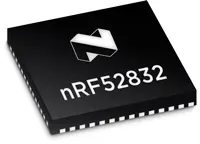Electronics News
Archive : 19 June 2015 год
 Traditionally, tantalum nitride has been used for the protective layer around copper wires in computer chips, but Stanford electrical engineer H-S Philip Wong says that using graphene to wrap wires could allow transistors to exchange data faster than is currently possible. He adds the advantages could increase in the future as transistors continue to shrink.
Traditionally, tantalum nitride has been used for the protective layer around copper wires in computer chips, but Stanford electrical engineer H-S Philip Wong says that using graphene to wrap wires could allow transistors to exchange data faster than is currently possible. He adds the advantages could increase in the future as transistors continue to shrink.
"Researchers have made tremendous advances on all of the other components in chips, but recently there hasn't been much progress on improving the performance of the wires," said Wong.
Tantalum nitride acts as an isolating material, keeping copper from migrating into the silicon transistors and rendering them non-functional. Graphene is claimed to serve a dual role; it isolates the copper from the silicon on the chip and also conducts electricity. Added to this, it is said to be eight times thinner than the thinnest layer of tantalum nitride required for the same function.
"Graphene has been promised to benefit the electronics industry for a long time, and using it as a copper barrier is perhaps the first realisation of this promise," Wong said.
Wong's team said that a graphene isolator would boost wire speeds from 4% to 17% compared to tantalum nitride in today's chips. But, as transistors and wires continue to shrink in size the benefits of graphene become greater. The engineers estimate that their technology could increase wire speeds by 30% in the next two generations, and are looking into techniques to grow graphene directly onto wires while chips are being mass-produced.
Author
Tom Austin-Morgan
Source: www.newelectronics.co.uk
 The changing nature of military communications has prompted the Ministry of Defence (MoD) to take a different approach to the way in which it develops communications systems that will support future military requirements.
The changing nature of military communications has prompted the Ministry of Defence (MoD) to take a different approach to the way in which it develops communications systems that will support future military requirements.
MORPHEUS will be the main vehicle for the procurement of the UK Armed Forces' tactical communications capability for the next 30 years. Project MORPHEUS will develop and consider options for what will replace the current system. It is looking for input on new technological approaches from anyone involved in areas such as electronics, telecommunications, wireless, IT, networks and security. In this way, the MoD aims to make the best use of current and emerging technology to create a system that can evolve and be managed cost-effectively.
The idea will be drawn together by the MORPHEUS Systems House – a group led by PA Consulting, with QinetiQ, Roke Manor Research and CGI. Rick Mather, project lead for MORPHEUS at QinetiQ, said: "The key here is to examine all the potential options out there to identify the most operationally effective and cost effective solutions.
"We know there are lots of really exciting technology and security SMEs, as well as academics, doing exactly the kind of research and innovation this project needs. We also know a lot of them think that these kinds of contracts always go to the same old defence companies. That's not the case here, we're really open to innovative, and even unusual solutions to ensure that the final options are the best possible."
Companies wishing to register an interest can do so via the MORPHEUS website (link below). Interested parties can also stay up-to-date through the MORPHEUS Twitter (@morpheusind) and the MORPHEUS LinkedIn group.
Author
Graham Pitcher
Source: www.newelectronics.co.uk
 In a move which it claims will redefine the single chip Bluetooth Smart market, Nordic Semiconductor has launched the nRF52832, said to be the first in a series of ultra low power multiprotocol radio SoCs. Amongst the target applications for the part are IoT edge nodes and wearable devices.
In a move which it claims will redefine the single chip Bluetooth Smart market, Nordic Semiconductor has launched the nRF52832, said to be the first in a series of ultra low power multiprotocol radio SoCs. Amongst the target applications for the part are IoT edge nodes and wearable devices.
"Current single chip Bluetooth Smart solutions are struggling to keep up with the rate of innovation in Bluetooth Smart, particularly in applications such as wearables and IoT," claimed Thomas Embla Bonnerud, director of product management. "Until now, greater performance could only be achieved at the expense of power efficiency. The nRF52 Series merges barrier breaking performance and power efficiency on a single chip."
The device features a Cortex-M4F processor running at 64MHz, as well as 512kbyte of flash and 64kbyte of RAM. Also featured is a multiprotocol 2.4GHz radio with a receive sensitivity of -96dB and a peak transmit current of 5.5mA. Alongside an on chip RF Balun, the device integrates a fully automatic power management system and a range of on chip analogue and digital peripherals
"With the launch of the nRF52832, we are completely pushing the envelope for what's possible with single chip Bluetooth Smart," Bonnerud added. "Applications that require the sort of processing power and performance that we now pack into this chip have, until now, had to use a two chip solution."
Built on a 55nm process, the nRF52832 is being supplied in a choice of 6 x 6mm QFN and 3 x 3.2mm CSP options and samples are available now.
Author
Graham Pitcher
Source: www.newelectronics.co.uk

